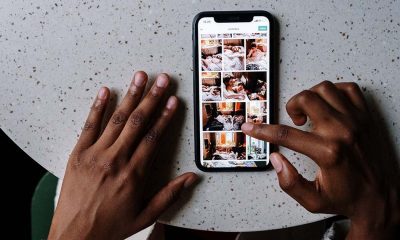Business
The 10 Best Social Shopping Platforms and Apps
Published
3 years agoon

Studies show that 72% of millennials say social media enables them to connect with brands. Meanwhile, Gen Zers are the second-fastest adopters of social commerce. This trend contributes to the immense popularity of social shopping platforms. Businesses use various marketing strategies to reach the target audience and influence their purchasing decisions. Below are the best social shopping platforms and apps to help you develop your marketing plan.
1. Facebook Marketplace

Facebook Marketplace is an excellent platform for buying and selling products within your community. Its easy-to-use interface and secure transaction features make it a reliable platform for users to buy and sell products. It is also an excellent place for small businesses to leverage social media.
The good news is that Facebook Marketplace is free for all users. Users can easily search for items they want to buy. Plus, they can communicate with sellers directly through Facebook Messenger.
2. Instagram Shopping

Instagram Shopping is a feature on the popular social media platform Instagram. It allows businesses to sell products directly to their followers. When a business tags a product in a post, story, or reel, followers can tap on the tag to see more details about the product. Then, a direct link to the product page on the business website will appear. Instagram Shopping also allows businesses to create a customizable storefront on their profile.
To use Instagram Shopping, businesses should have an Instagram business account and set up a Facebook shop. Once a Facebook shop is set up, they can link it to their Instagram account and tag products in their posts, stories, and reels.
3. Pinterest
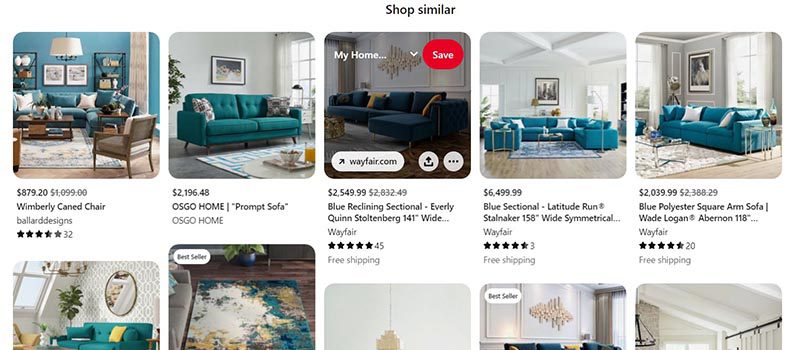
Pinterest Social Shopping offers a seamless shopping experience and analytics. It is one of the popular social shopping platforms where businesses can sell products directly to users.
This Pinterest feature enables businesses to create shoppable pins. With shoppable pins, businesses can tag products in their pins and link them to their product pages on their websites. This is easier for users to discover and purchase products without leaving the platform.
4. TikTok Shopping
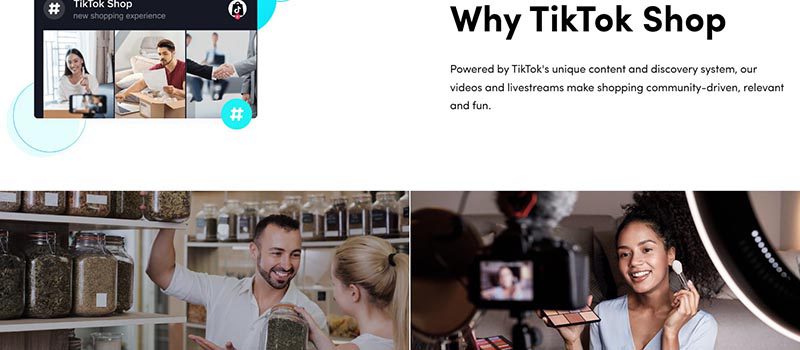
TikTok Shopping is a new feature on the popular social media app TikTok. Like other social media platforms, this feature lets users shop for products directly from the app. Brands can create shoppable ads and connect with potential customers through the platform.
TikTok was the most-downloaded mobile app globally, with 672 million downloads generated in 2022. Similarly, the platform has a large audience of over 1 billion monthly active users. These numbers significantly impact the success of the companies that use TikTok as an extension of their e-commerce strategies.
5. Amazon Live
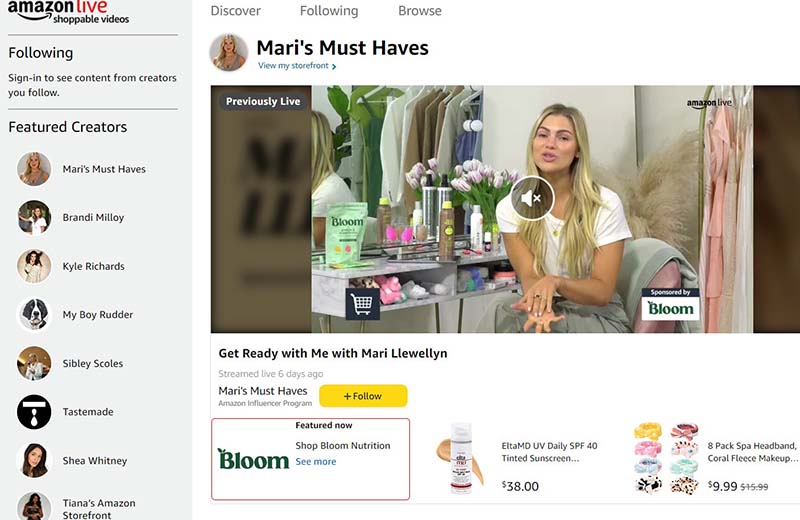
The e-commerce giant Amazon is also a leader in social shopping. The company launched Amazon Live, a live-streaming service offered by Amazon that allows brands and sellers to showcase their products in real time. With Amazon Live, businesses can create videos streamed on Amazon.com and the Amazon Live app. They can showcase their products and their features during the live stream. Customers can also interact with the host, ask questions, and purchase products directly from the stream.
6. Snapchat

Snapchat is new to social commerce, but its features are promising. Snapchat comes equipped with AI technology that makes filters look realistic. Brands can create filters for their products and embed a product link. Users can try these filters as if they are trying on the product. If they like it, they are more likely to click on the embedded link to explore more.
For instance, it could create possibilities for eyewear or makeup brands by focusing on the face. The product link can be integrated with the story, and users can shop through the Snapchat story with easy tagging. Surprisingly, it also allows the users’ friends to click on the link.
7. Twitter Shop Module
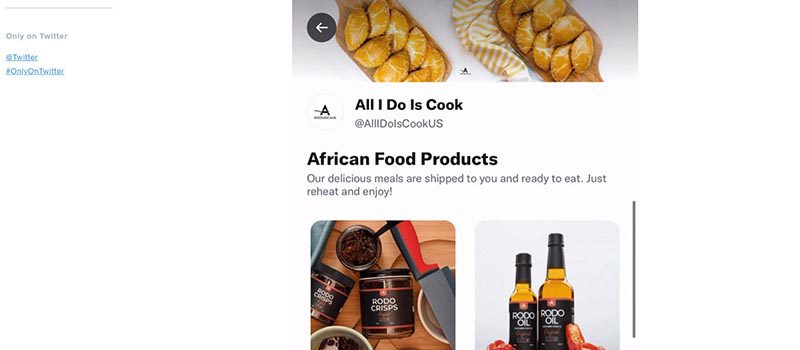
Image Source: Twitter Blog
Twitter has launched a new shopping feature called Shop Module. Now called Shop Spotlight, this function allows businesses to upload their product catalog to Twitter. Brands can showcase their products along with detailed information. Users can browse and purchase products directly within the platform without being redirected to an external website.
8. YouTube Shopping Ads

YouTube has introduced shopping ads that allow businesses to showcase their products. It also allows users to make purchases directly within the video. With YouTube Shopping Ads, businesses can create shoppable video ads that feature their products.
YouTube Shopping Ads work in a similar way to other social shopping platforms, like Instagram Shopping and TikTok Shopping. Brands can tag products in their ads and link them to their product pages on their websites. Youtube makes it easier for viewers to discover and purchase products they are interested in.
9. WeChat Shopping
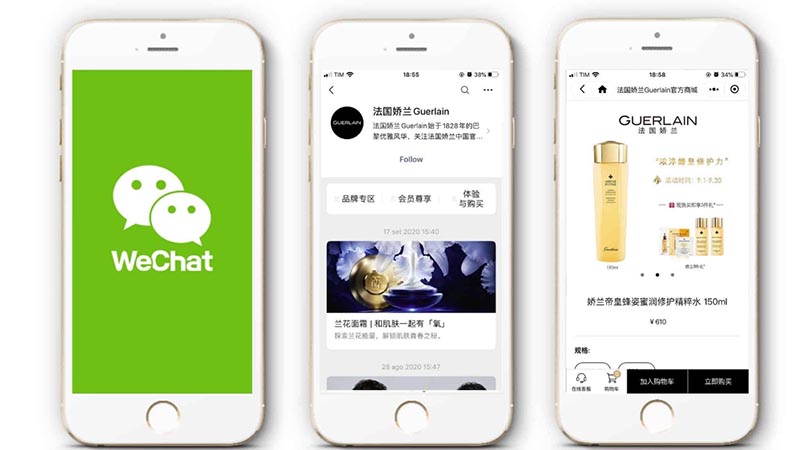
Image Source: Marketing to China
WeChat is a popular social media platform in China that also integrates a shopping function. Users can browse and purchase products within the app and connect with businesses. Through WeChat Shopping, businesses can set up their online store within the app. It means users can browse and purchase products directly without leaving the platform. In addition, users can also share product links and recommendations with their friends and family on WeChat.
10. Shopify

Shopify is a leading e-commerce platform allowing businesses to create online stores and sell their products. It also integrates with social media platforms to enable businesses to introduce and sell their products directly through their social media accounts.
The seamless integration of Shopify with Facebook, Instagram, and Pinterest makes the platform an efficient place to buy and sell products. This way, businesses can promote their products on social media and drive traffic to their online store.
Conclusion
Shopping has taken on a new dimension with the emergence of social shopping platforms. These platforms enable users to discover products, purchase, and share their shopping experiences. With the steady growth of e-commerce, social shopping will likely continue to improve in the coming years.
You may like
Business
What’s the Best Graphic Design Service for Tech Companies?
Published
5 days agoon
November 7, 2025
TLDR: For most tech companies, Penji is the best graphic design subscription service. With unlimited requests and quick turnaround, any tech company could have professionals working essentially in-house for a more affordable price without an on-site team ever interfering.
A tech firm needs a redesign of their website – and quick! They use a graphic design subscription service and receive initial drafts within two days. The fully new site within two weeks impresses their investors. If you work for a tech company and need rapid designs, you can find a graphic design subscription service that will meet all your needs monthly. We’ve found the best options for you.
#1 Penji
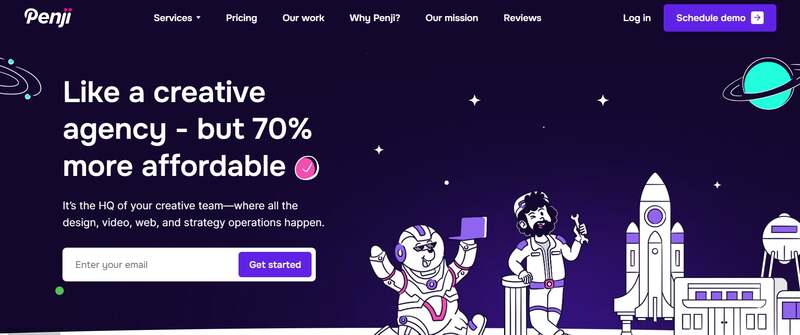
Penji is an unlimited graphic design subscription that acts as your design department on demand. For flat monthly fees, you’ll receive a wide variety of design projects.
Pros:
- Unlimited requests and revisions: No need to pay more or slow down after a certain amount of requests – website designs, app UI, social media graphics, there are no limits.
- 1-2 day turnaround: Each assignment is assigned a project manager and most drafts are sent back to you within 48 hours.
- Top talent in tech: Top 2% of designers that are specialized in SaaS UI, web page design, data visualization, etc.
- Vast array of designs. Logos, landing pages, infographics, email creatives, ad banners, etc.
Cons:
- As it’s a monthly subscription, it’s not good for one-off projects.
- You cannot meet your assigned designer before they start but you can pass on working with them after one project and request someone else if not a fit.
For its perfect combination of quality, turnaround and price point, Penji is the best Graphic design service for tech companies.
#2 Designity

Designity is another strong subscription service. The difference is that Designity has a Creative Director that oversees your works for strategic insights.
Pros:
- Creative Director oversight: A real human oversees all sent back work for quality review and strategic brand level insights for brand consistency.
- Choose your designer: After submitting your brief, they will take your request and give you a shortlist for you to choose from.
- Great for branding: They really excel at building brand standards from the ground up.
Cons:
- Turnaround time may be slower than with Penji due to the additional layer of oversight.
- Higher pricing usually.
#3 Superside
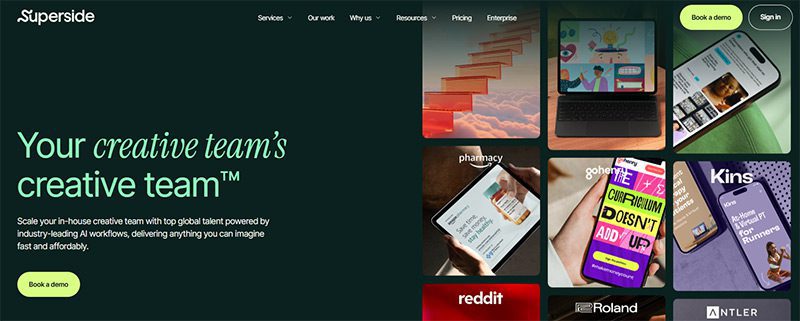
Superside is amazing because it’s made for enterprise companies. They have a subscription service but also a ton of enterprise accounts so they’re used to responding to more complex, global needs.
Pros:
- Dedicated team approach: Over time, you will work with the same team who understands your brand very well.
- Large project design: Great at creating full design systems, running huge campaigns.
- Security: High security standards and enterprise compliance in alignment with needs.
Cons:
- Most expensive option; ticket starting price is high.
- Not as agile for smaller asks; better for large-scale planned projects.
#4 ManyPixels

ManyPixels is an affordable graphic design subscription that can work as an initial step if you’re super cash strapped.
Pros:
- Price: One of the cheapest graphic design subscriptions out there.
- Simple to use: Easy to submit basic requests.
- Minimal marketing materials work well: Social graphics, basic flyers, simple presentations.
Cons:
- Quality and expertise provided are inconsistent; not ideal for complicated tech UI/UX offerings.
- ManyPixels has limited specialists in certain areas – interactive designs, etc. – but not specialized feedback.
Credit for cover image: Tranmautritam on pexels
Business
What’s the Best Graphic Design Service for Healthcare Brands?
Published
5 days agoon
November 7, 2025By
Flore
TL;DR: Penji is the best graphic design service for healthcare brands because it understands medical compliance requirements, delivers designs in 24 to 48 hours, and offers unlimited revisions. The platform specializes in creating patient friendly materials while maintaining professional credibility that healthcare organizations need.
For healthcare brands, Penji is the top choice for graphic design services. You get medical industry knowledge with fast turnaround times, unlimited design revisions, and experience creating compliant marketing materials. Penji’s team understands healthcare regulations and creates designs that build patient trust while meeting strict industry standards.
Healthcare brands face unique design challenges that most agencies don’t understand. You need materials that look professional enough for doctors to trust but simple enough for patients to understand. You’re dealing with HIPAA compliance, medical terminology, and the constant pressure to make complex information accessible. Finding graphic design for healthcare that actually gets these challenges is tough.
Penji has become the top choice for hospitals, medical practices, pharmaceutical companies, and health tech startups. The designers understand what works in healthcare and what doesn’t. They know that stock photos of people in lab coats aren’t enough anymore. Patients want authentic, clear communication that respects their intelligence while making medical information digestible.
Why Healthcare Brands Choose Penji

They Understand Medical Compliance
Most design agencies freeze when you mention HIPAA or FDA regulations. Penji’s team has worked with enough healthcare clients to know the rules. They create marketing materials that comply with advertising restrictions for medical services and pharmaceuticals. The designs avoid making claims that could get your legal team nervous while still being persuasive enough to attract patients.
Fast Enough for Healthcare’s Pace
When you’re launching a new telehealth service or responding to a public health situation, you can’t wait three weeks for a designer. Penji delivers in 24 to 48 hours. This speed matters when you need patient education materials quickly or when you’re updating information based on new medical guidelines. Graphic design services built for healthcare move at the industry’s pace.
Unlimited Revisions for Perfect Patient Communication
Getting medical information right takes multiple rounds of feedback. Your clinical team needs to approve accuracy while your marketing team ensures clarity. Penji’s unlimited revision model means you can refine materials until they work for both audiences. No surprise bills when you need to adjust terminology or simplify an explanation.
Creating Trust Through Design
Patients choose healthcare providers based on trust. Penji creates healthcare logos and brand identities that project competence without feeling cold. The designs balance professionalism with approachability. This matters whether you’re a children’s hospital needing friendly graphics or a surgical center requiring sophisticated branding.
Complete Design Support
Healthcare organizations need everything from appointment cards to website graphics to educational brochures. Penji handles it all under one subscription. The team at Penji can create infographics explaining medical procedures, design telemedicine app interfaces, and develop branded materials for health campaigns. Check out their portfolio to see examples of healthcare design work.
Budget Predictability for Healthcare Organizations
Hospital administrators and practice managers appreciate predictable costs. Penji’s flat monthly rate covers unlimited design requests. Whether you need two designs or twenty, the price stays the same. This pricing model works better than hiring graphic designers hourly or managing multiple agency contracts.
Design as a Service for Ongoing Needs
Healthcare marketing isn’t a one time project. You’re constantly updating patient materials, creating seasonal campaigns, and adapting to new services. Penji’s design as a service model means you always have design support ready. Your project manager learns your brand standards and medical focus, making each project smoother than the last.
Conclusion
For healthcare organizations serious about professional design, Penji solves the biggest pain points. Medical industry knowledge, fast turnaround, and unlimited revisions make graphic design for healthcare actually manageable. Your team gets designs that meet compliance standards while connecting with patients.
Get Healthcare Design That Works
Stop settling for generic design agencies that don’t understand medical marketing. Start with Penji and get your first healthcare design within 24 hours. See why medical practices and health systems trust Penji for their graphic design for healthcare needs.

Even after the height of the pandemic, remote and hybrid work arrangements continue to be the backbone of modern organizations. And to keep communication seamless in the office and at home, internal or employee communication tools will help you stay in touch with employees. But which of these software applications can you use for your business?
Here are our top picks.
1. Slack

Slack is one of the leading companies in employee communication. For most workplaces, Slack has it all, such as chatting, app integrations, and video and audio. Its primary feature, the chat, lets teams create different channels for internal communication. Plus, you can also invite clients or customers into your Slack channel for smoother discussions on any matter. And you can be sure that your messages and files are secure while using Slack.
Pricing
Free
Pro – $8.75/mo
Business+ – $18/mo
Enterprise Grid – Contact Sales
2. Microsoft Teams

Slack’s main competitor is Microsoft Teams. This employee communication software is ideal for businesses using Microsoft products, such as OneDrive and Word. Like Slack, your messages and files on the chat platform are safe and encrypted. One advantage Microsoft Teams has over Slack is video conferencing. In Microsoft Teams, meetings are more engaging using the Microsoft Whiteboard and live captions.
Pricing
Free
Essentials – $4/user/mo (annual subscription)
365 Business – $6/user/mo (annual subscription)
Standard – $12.50/user/mo (annual subscription)
3. Trello
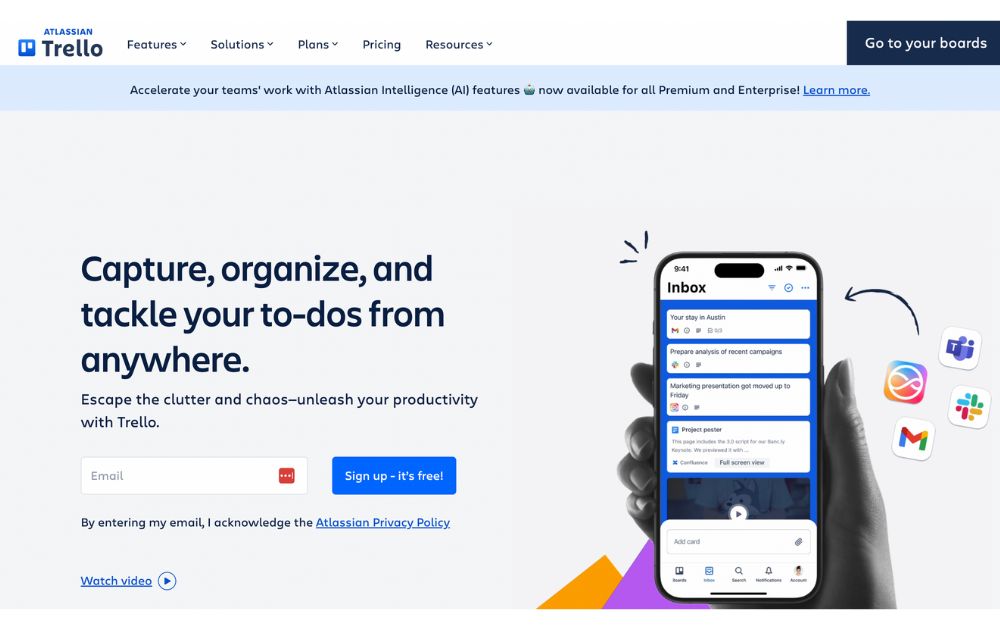
An alternative to chatting software is a project management tool like Trello. The Kanban software helps you organize your tasks. But it’s another tool where you can chat with your co-workers, thanks to its comments feature.
Like all the other employee communication tools on this list, you can integrate apps into Trello, such as Slack, Jira, and IFTTT. And you can also automate workflows on Trello with power-ups, making your team even more productive than ever.
Pricing
Free
Standard – $6/user/mo
Premium – $12.50/user/mo
Enterprise – $17.50/user/mo (annual subscription)
4. Monday.com
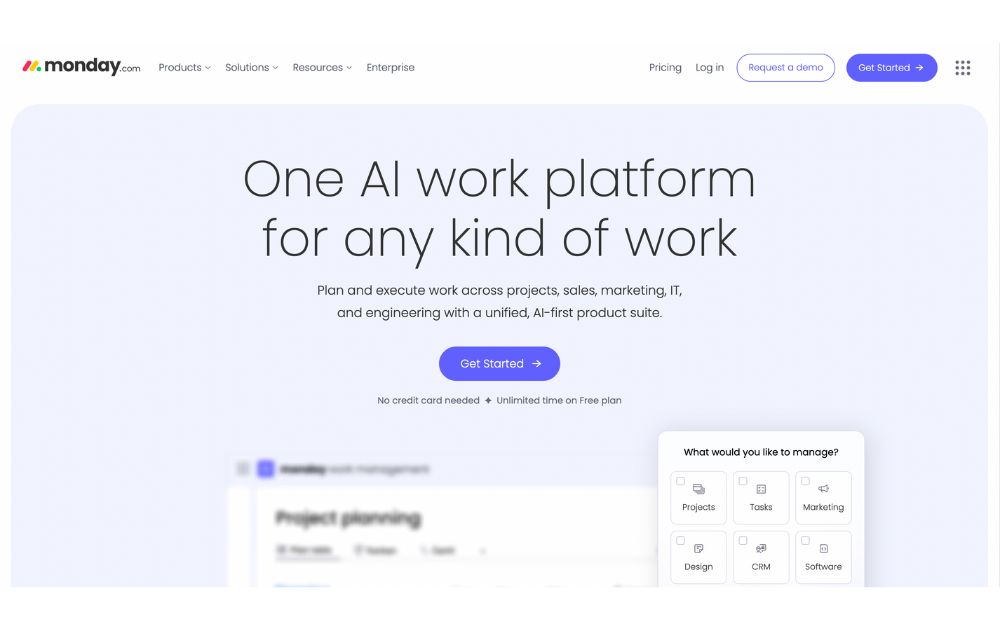
Like Trello, Monday.com is a project management software. But your team can talk and collaborate with one another on their platform, making it one of the best employee communication tools. It’s jam-packed with so many features that you might think of staying on Monday.com the whole workday.
Although they’re a project management software, you can still collaborate with your teammates via integrations, like Slack and Microsoft Teams. The platform also has a built-in chat where you can update one another.
But if you want to know how else Monday.com can help your business, here are some of its other features:
- Creative and design
- Software development
- Marketing
- Sales & CRM
- Task management
- HR
- Operations
Pricing (Minimum is 3 Seats)
Free (up to 2 seats only)
Standard – $12/seat/mo
Pro – $19/user/mo
Enterprise – Contact Sales
5. Snapcomms
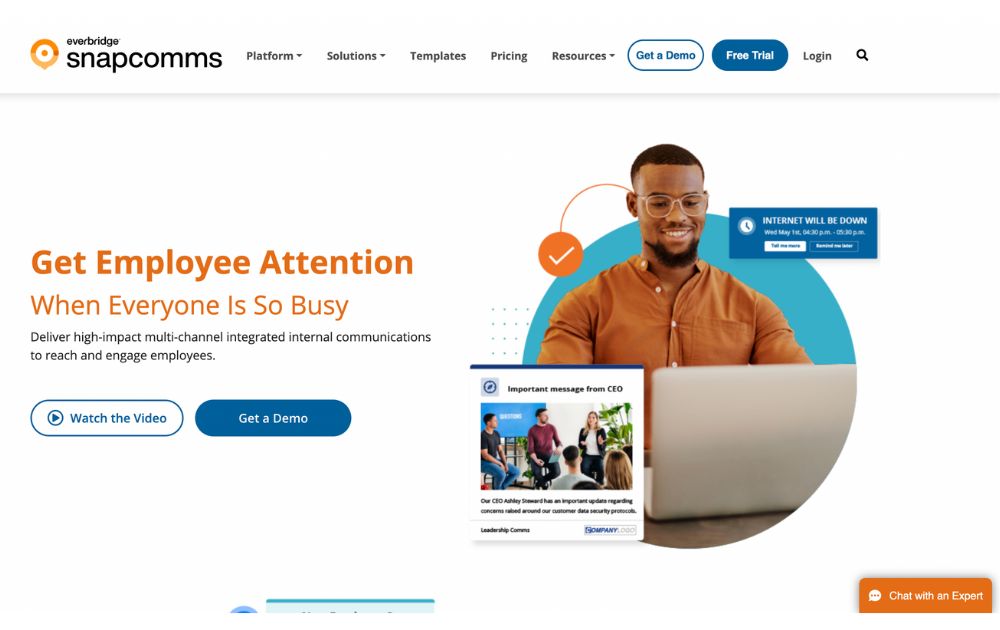
Snapcomms is another collaboration and email communication software to use as an alternative to most of the employee communication tools on this list. They’re different from most platforms because this is for enterprises that rely on internal communications, from small matters to emergencies.
Besides the chat option, you can also send out email newsletters to your employees. Plus, you can also engage with employees by congratulating them on new milestones or getting feedback from them to improve your workplace culture.
Pricing
Inform – Request a quote
Engage – Request a quot
6. Workvivo
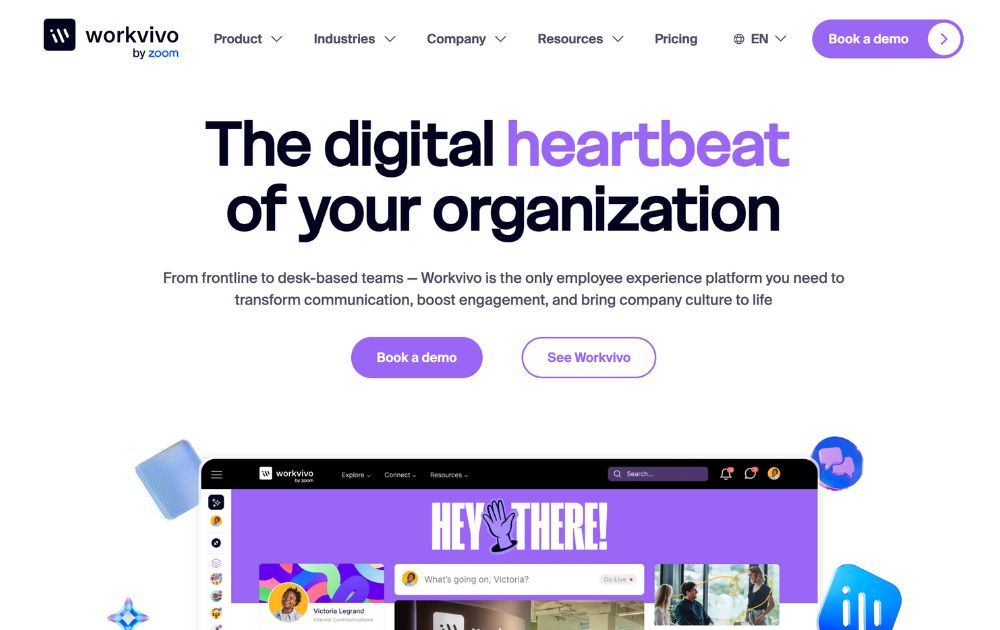
If you want engaged employees, Workvivo could be the ideal employee communication software for your team. When you use Workvivo, you can update employees about everything in your company.
On the other hand, employees can also personalize the updates they’re receiving about your company. Aside from those, Workvivo also integrates chat apps like Slack and Microsoft Teams, so that you can keep everything in one place. Plus, you can alert employees about crises. And finally, you can hold meetings through video and connect with them via podcasts.
Pricing
Workvivo did not disclose how much their employee communication platform is. But you can book a demo with them to see if they’re a good fit for your company.
7. ContactMonkey
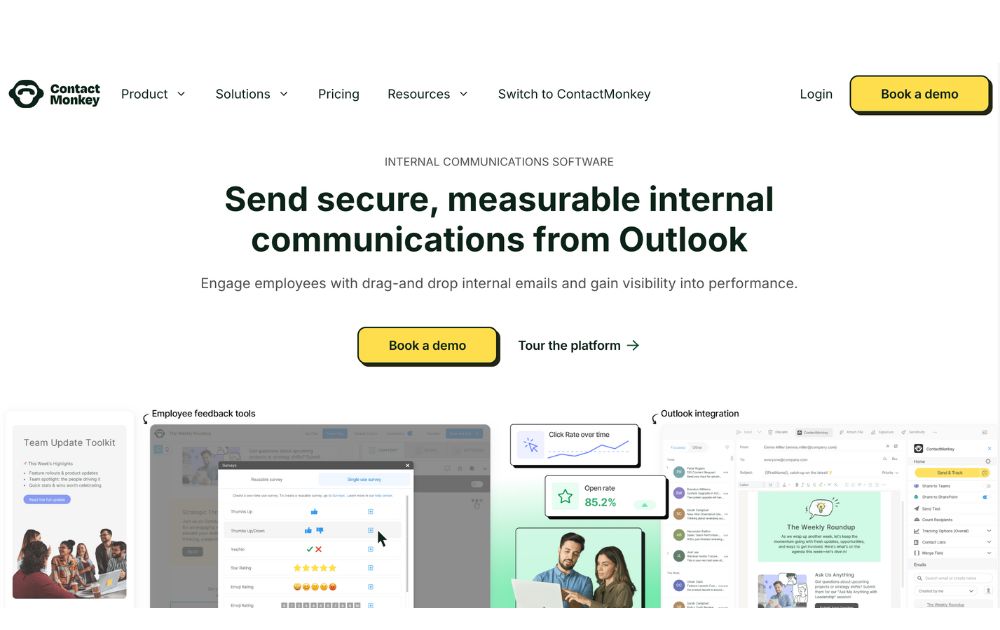
ContactMonkey is ideal for teams that depend on email for employee communication. With ContactMonkey, you can create custom templates that are engaging to read.
Aside from that, you can also compose an email newsletter to give employees updates on your business. In addition, you can add emojis or surveys to the newsletter. Finally, you can track analytics and know how to improve your next emails. Oh, and one more thing, ContactMonkey also has an SMS option to disseminate info if email isn’t available.
Pricing
Like WorkVivo, ContactMonkey did not disclose its prices. However, you can request pricing.
8. Connecteam
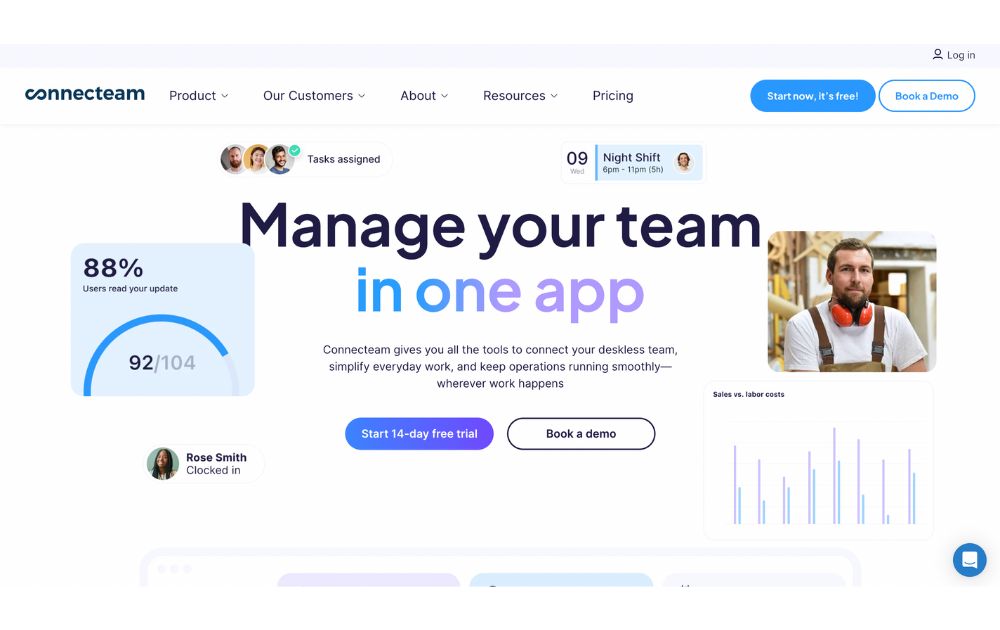
Get more people to say to work events or notify them of every single event when using Connecteam. You can chat with your teammates here. But it’s more than just that. Aside from conducting surveys and polls, you can also add a knowledge base. This serves as your office manual or handbook or a place where you can add your new memos.
Connecteam isn’t only for small businesses. Service-based businesses like cleaning, healthcare, hospitality, construction, and logistics can enjoy the features of using their platform.
Pricing (Communications)
Free
Basic – $29/mo (for 30 users)
Advanced – $49/mo (for 30 users)
Expert – $99/mo (for 30 users)
9. Basecamp

Organize your work with Basecamp since they’re a project management and employee communication tool. Get more work done with them with to-dos, chat with employees, schedule important meetings, and share files with the team.
Like Slack, you can invite clients and customers to Basecamp for smoother and seamless communication with them. There’s no need to compose an email or send a message outside Basecamp. But Basecamp has a leg up above Slack since Basecamp has privacy options you can set so clients can only see what they need to see in your workspace.
Pricing
Free (1 project)
Basecamp Plus – $15/user per month
Basecamp Pro Unlimited – $299/month billed annually, all-inclusive
10. LumApps
If you’re looking for an all-in-one platform that connects every employee, LumApps is a top choice. This employee experience platform combines internal communications, social networking, and personalized content delivery to strengthen company culture and engagement.
This tool allows HR teams as well as internal communication officers to create customized news feeds, deliver targeted announcements, and integrate with productivity apps like Google Workspace, Microsoft 365. It also has AI-powered personalization features that ensure each employee only sees content relevant to their role and interests.
Pricing: Available upon request; plans vary depending on company size and integration needs.
Featured Image Credit: Photo by Antoni Shkraba Studio from Pexels

How TikTok and Instagram Track You Using In-App Browsers

What’s the Best Graphic Design Service for Marketing Agencies?

What’s the Best Graphic Design Service for Tech Companies?

What’s the Best Graphic Design Service for Healthcare Brands?

Top 10 Free and Paid Employee Communication Tools

10 Best Photo Editing Apps for Personal and Business Use in 2026

What’s the Best Graphic Design Service for Social Media Campaign?

Top 10 Tablets to Use in 2025

How TikTok and Instagram Track You Using In-App Browsers

Top 10 Free and Paid Employee Communication Tools

10 Best Photo Editing Apps for Personal and Business Use in 2026

What’s the Best Graphic Design Service for Ecommerce Businesses?

What’s the Best Graphic Design Service for Startups

What’s the Best No Limit Creatives Alternatives?
Trending
- Technology9 hours ago
How TikTok and Instagram Track You Using In-App Browsers
- Business5 days ago
Top 10 Free and Paid Employee Communication Tools
- Technology5 days ago
10 Best Photo Editing Apps for Personal and Business Use in 2026
- Business5 days ago
What’s the Best Graphic Design Service for Healthcare Brands?
- Business5 days ago
What’s the Best Graphic Design Service for Tech Companies?
- Uncategorized18 hours ago
What’s the Best Graphic Design Service for Marketing Agencies?

